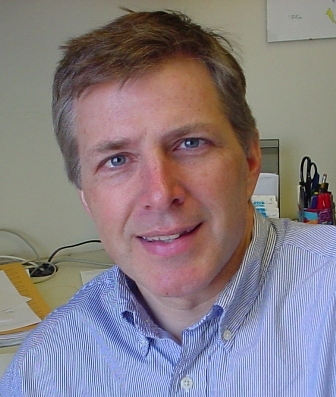|
TOWARD A SCIENCE OF CONSCIOUSNESS 2011 STOCKHOLM MAY 1-8, 2011 AULA MAGNA HALL
PLENARY 1 TUESDAY, MAY 3 8:30 am to 10:40 am Brain Electromagnetic Fields and Consciousness
DAVID MCCORMICK SUE POCKETT JOHNJOE MCFADDEN Yale Auckland Surrey
David A. McCormick is a professor of Neurobiology at Yale University School of Medicine. His laboratory investigates the cellular and network mechanisms of cortical and thalamocortical function and modulation. The basic principles by which the forebrain generates rhythmic activity during sleep and waking, how this is modulated by neurotransmitters that determine the waking/sleeping state, and how these different patterns of activity modulate cortical communication are under active investigation. Recent investigations have also focused on the role of endogenous electric fields in guiding and synchronizing cortical network activity. Susan Pockett earned a PhD in neurophysiology from the University of Otago in 1980. After a postdoc with Terje Lømo at the University of Oslo, she returned to New Zealand to set up a single cell neurophysiology lab in the Dept of Physiology at the University of Auckland, where she worked (apart from short sabbaticals at the Universities of New South Wales and Manitoba) until 1995. At that point she made an abrupt professional shift and embarked on the study of consciousness. After a few years doing field work and reading the literature in this new area from a base in the Dept of Psychiatry at the University of Auckland, she published a book outlining an electromagnetic field theory of consciousness in 2000. She then moved to the Dept of Physics at the University of Auckland, where (apart from a brief sojourn at UC Berkeley) she has worked for the last decade. Now, armed with a fresh theoretical perspective and skill set, she is looking for opportunities to return to her roots in neurophysiology. Johnjoe McFadden is a molecular biologist/microbiologist. Nearly a decade ago he became interested in the possibility of quantum mechanics playing a non-trivial role in life, particularly in the process of mutation. Whilst researching this topic for a popular science book, ‘Quantum Evolution’, he encountered the quantum theories of consciousness. His reading convinced him that consciousness must indeed be some kind of physical field but he was not persuaded that macroscopic quantum states were feasible in a warm wet brain. Instead he stumbled upon the idea that the brain’s own electromagnetic field was a far more realistic substrate for consciousness and went on to propose the conscious electromagnetic information field (cemi field) theory. The cemi field theory was first described in McFadden’s popular science book ‘Quantum Evolution’ in 2000 and then described in more detail in two JCS papers published in 2002. Since then McFadden has continued his mainstream work in molecular genetics but maintains a keen interest in attempts to provide the study of consciousness with a solid scientific foundation.
|
|
|||||||||||||



